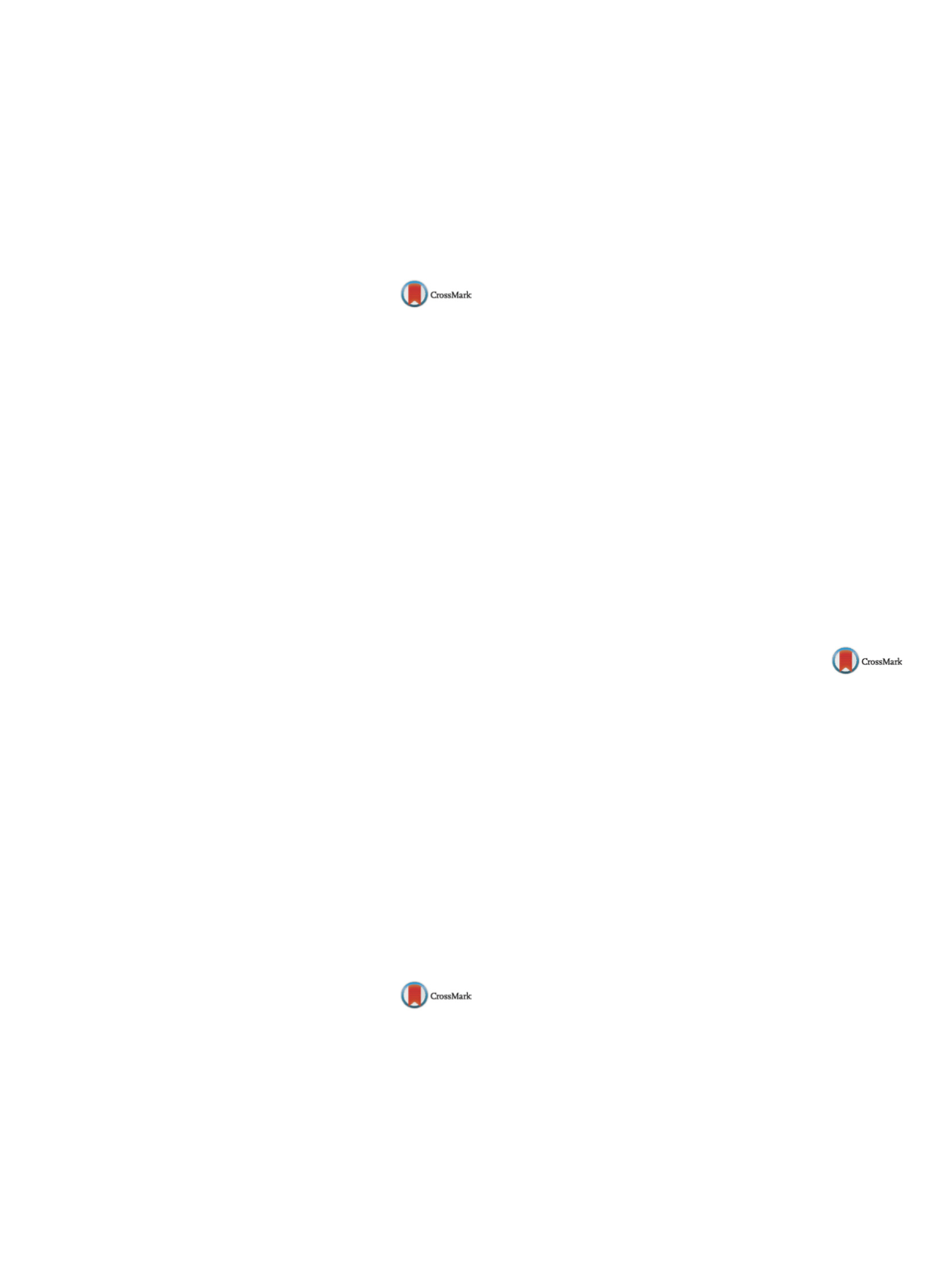

25th European Congress of Psychiatry / European Psychiatry 41S (2017) S465–S520
S497
with delirium using DRS-R98 were more likely discharged to an
institution (
z
= 2.12,
P
= 0.03)
Conclusion
Assuming a direct association between delirium and
examined outcomes (mortality, los and discharge destination) dif-
ferent classification systems for delirium identify populations with
different outcomes.
Disclosure of interest
The authors have not supplied their decla-
ration of competing interest.
http://dx.doi.org/10.1016/j.eurpsy.2017.01.615EV0286
Proportions of anxiety and depression
symptoms in adult cleft patients and
non-cleft patients with skeletal
malocclusions
V. Medvedev
1 ,∗
, Y. Fofanova
1, V. Frolova
1, A. Drobyshev
21
PFUR University, Chair of Psychiatry, Psychotherapy and
Psychosomatic Pathology, Moscow, Russia
2
Moscow State University of Medicine and Dentistry, Moscow, Russia
∗
Corresponding author.
Introduction
Diagnosis and treatment of patients with cra-
niofacial anomalies such as cleft lip and palate and skeletal
malocclusions present a challenge to public health. Dentofacial
abnormalities may be associated with depressive and anxiety dis-
orders and poor quality of life.
The aim of this screening study was to evaluate and to compare
the rates of anxiety and depression in cleft patients and non-cleft
patients with skeletal malocclusions.
Methods
The study used psychometric method-HADS and State
Trait Anxiety Inventory were used. The first group consisted of
cleft patients, the second group consisted of non-cleft patients with
skeletal Class II, Class III and anterior open bite malocclusions; the
third group was control.
Results
Study sample consists of 42 patients (33 females; 24
±
7.2
years). In the 1st group, anxiety symptoms were detected in 34.7%;
depression symptoms - in 17.2% of patients, high rates of reactive
anxiety were registered in 35.8%. In the 2nd group, anxiety symp-
toms were detected in 29.6% of patients; depression symptoms - in
13,1% of patients, high rates of reactive anxiety were registered
in 34.2%. In the 3rd group anxiety (18.7%) and depression (8.3%)
symptoms and high rates of reactive anxiety (17.7%) were regis-
tered significantly less often than in 1st and 2nd groups (
P
< 0.005,
P
< 0.001 and
P
< 0.001 respectively).
Conclusions
Our data suggest that cleft-patients and non-cleft
patients with skeletal malocclusions have statistically significant
higher rates of anxiety and depression than controls and require
orthodontic-surgical treatment that should be organized with the
assistance of psychiatrist.
Disclosure of interest
The authors have not supplied their decla-
ration of competing interest.
http://dx.doi.org/10.1016/j.eurpsy.2017.01.616EV0287
Causeless appearance discontentment
in patients of plastic surgeons and
cosmetologists: Risk factors and
patterns of dynamics
V. Medvedev
∗
, V. Frolova
PFUR University, Chair of Psychiatry, Psychotherapy and
Psychosomatic Pathology, Moscow, Russia
∗
Corresponding author.
Introduction
Though phenomenon of dysmorphic disorder has
been studied extensively clinical dynamical characteristics of this
disorder are still being investigated.
Aim of this study was to evaluate patterns of dynamics and risk
factors of body dysmorphic disorder in patients of plastic surgeons
and cosmetologists.
Methods
We included adult patients of Maxillofacial Surgery and
Cosmetology departments of Moscow State University of Medicine
and Dentistry (from January 2010 to May 2016) with unconfirmed
“facial deformity” diagnosed with dysmorphic disorder (F45.2 and
F22.88 according to ICD-10). The study used clinical psychopatho-
logical method with follow-up period 1–3 years. Data from clinical
psychopathological assessment were processed using correlation
analysis and non-lineal regression analysis by means of logistic
regression method.
Results
Study sample consisted of 103 patients (78.6% female;
mean age 33.4
±
4.7 years). Statistically significant chronobiological
(age, hormone fluctuations, genesial cycle) and psychosocial (finan-
cial changes, forced separation, bereavement, loss of job, reduction
of social activity, conflict situation, sexual dysfunction, violation
of law, diagnosing of somatic disease) risk factors for dysmorphia
in different life periods have been established. Strong correlations
were found between dysmorphic disorder heterogenic clinical
picture (overvalued–33%, affective–24.3%, hypochondric–23.3%,
obsessive-compulsive–10.7%, delusional–8.7%) and patterns of
dynamics (phasic–41.7%, recurrent–33%, chronic–25.3%). Our data
suggest that dysmorphia manifests in any age group and in 74.7%
cases is not continuous.
Conclusion
Our findings allow to conduct focused diagnostic
search, prophylactic psychotherapeutic interventions and early
psychopharmacological treatment in individuals with identified
risk factors for dysmorphic disorder.
Disclosure of interest
The authors have not supplied their decla-
ration of competing interest.
http://dx.doi.org/10.1016/j.eurpsy.2017.01.617EV0288
Behavioral manifestations post
hemispherectomy due to
Sturge–Weber syndrome–A case of
success
J. Melim
∗
, A. Batista , A. Tarelho , R. Araújo , S. Fonseca
Centro Hospitalar de Leiria, Psychiatry, Leiria, Portugal
∗
Corresponding author.
Introduction
Sturge-Weber syndrome or encephalotrigeminal
angiomatosis is an uncommon neurocutaneous syndrome that
manifests with vascular malformations involving the brain, eye
and skin; Severe cases present with refractory seizures, sometimes
requiring major surgery such as hemispherectomy. Most of the
times, some degree of mental retardation and behavioral problems
are associated, requiring use of psychotropic medication and other
contention strategies. This report describes the case of a 19-year-
old boy who was submitted to a left hemispherectomy by the age
of one, and was still able to successfully complete basic education.
He started presenting severe behavioral problems, with aggressive
outbursts, by the beginning of adulthood, having been committed
to psychiatry ward. By the age of 22, the patient finds himself calm
and functional considering his limitations, with no need for hospital
admission for 2 years.
Objectives/aims
To describe a clinical case whilst reviewing liter-
ature concerning this matter.
Methods
Case report with complete clinical history and medical
data. Non-systematic review of PubMed database under the terms
“Sturge-Weber disease”, “Hemisferectomy”, “behavioral disorder
due to organic causes”, “post hemisferectomy out-comes”.
Results/discussion
Although presenting with severe arteriove-
nous malformation, refractory epilepsy and left hemispherectomy,
the patient was able to conclude basic instruction; He has lived
with his family until the age of 19, when he started displaying
disruptive behaviour; after 3 hospital admissions and perfecting


















